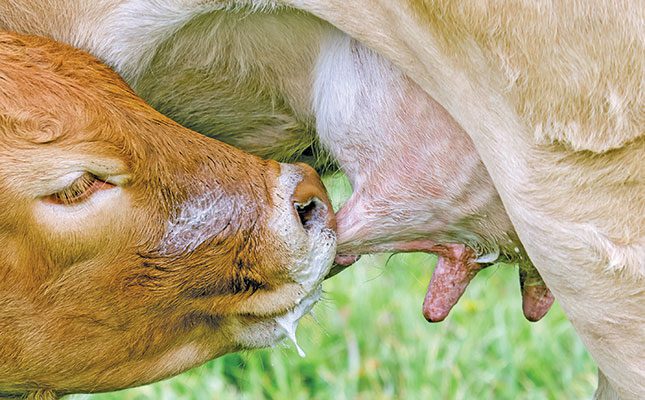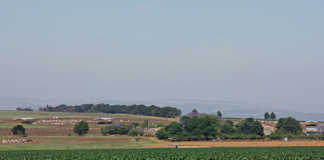
Photo: Wikimedia Commons
The main aim of beef production is to produce as many calves as possible. If you wean your calves properly, your cows should be able to calve every year.
A calf should be weaned when it is seven to eight months old. But the exact time of weaning should depend on the condition of the cow, not the age of the calf.
If you wean a calf before the cow’s condition score falls below 2,5, the cow is likely to maintain her condition. Winter feed has to be adequate, however. If possible, wean the calf before the cow’s condition score falls below 3,0.
During times of drought and poor feed supply, wean the calf early (about six months) to enable the cow to recover before winter. It is important for the cow to recover properly before her next calf is born.
In the eastern parts of the country, a calf born during spring can be weaned early in May at the age of seven to eight months. In the western parts, a calf can be weaned late in May or early June at seven to eight months, as the breeding season tends to be later in these regions.
Early weaning
Early weaning should only be considered during a severe drought or feed shortage, as calves weaned at a relatively young age (less than five months) will not develop properly.
If the condition of the cow deteriorates before the planned weaning time, you must decide whether to wean early and supply concentrate to the calf, or provide a roughage supplement to the cow, which will still be suckling the calf.
The cost of feeding an early-weaned calf is relatively high, as it will be fed mainly concentrates. You should therefore supply these concentrates only during difficult conditions.
How to wean a calf
All of the following methods have been proved to work. Choose whichever is convenient for you:
- Keep the calves in a well-fenced camp and remove the cows to a distant camp, preferably out of earshot of the calves.
- Remove the cows temporarily from a camp and in their absence move the calves to another distant camp. Cows tend to look for their calves in the camp in which they were last seen and this method should prevent the cows from breaking out of the camp.
- Exchange calves from two different herds; the calves will then have the company of cows. Some cross-suckling is likely to occur, however.
- Separate the cows and calves by a strong fence with closely spaced wires. This method can reduce weaning stress.
- Nose plates (factory-made or home-made) can be fitted to calves for seven to 14 days. They prevent suckling, even if cows and calves remain together throughout the weaning period. Once you remove the nose plates, you will be able to separate the cows and calves with relatively little stress.
General tips
- Castrate, dehorn and brand the calves when they are two to three months old, not just before weaning. This will ensure that the stress of these operations doesn’t add to the stress of weaning.
- Keep a few dry cows with the weaners to help them stay calm.
- Provide plenty of good-quality roughage, water and shade in the weaning camps. To prevent excessive walking and trampling, the camps should not be too large.
- The weaning process should last a week or two, depending on the age at the calves and the breed of cow.
Source: ‘Beef cattle – weaning of calves’. Department of Agriculture, Forestry and Fisheries. Retrieved from bit.ly/3GBMJYG.











